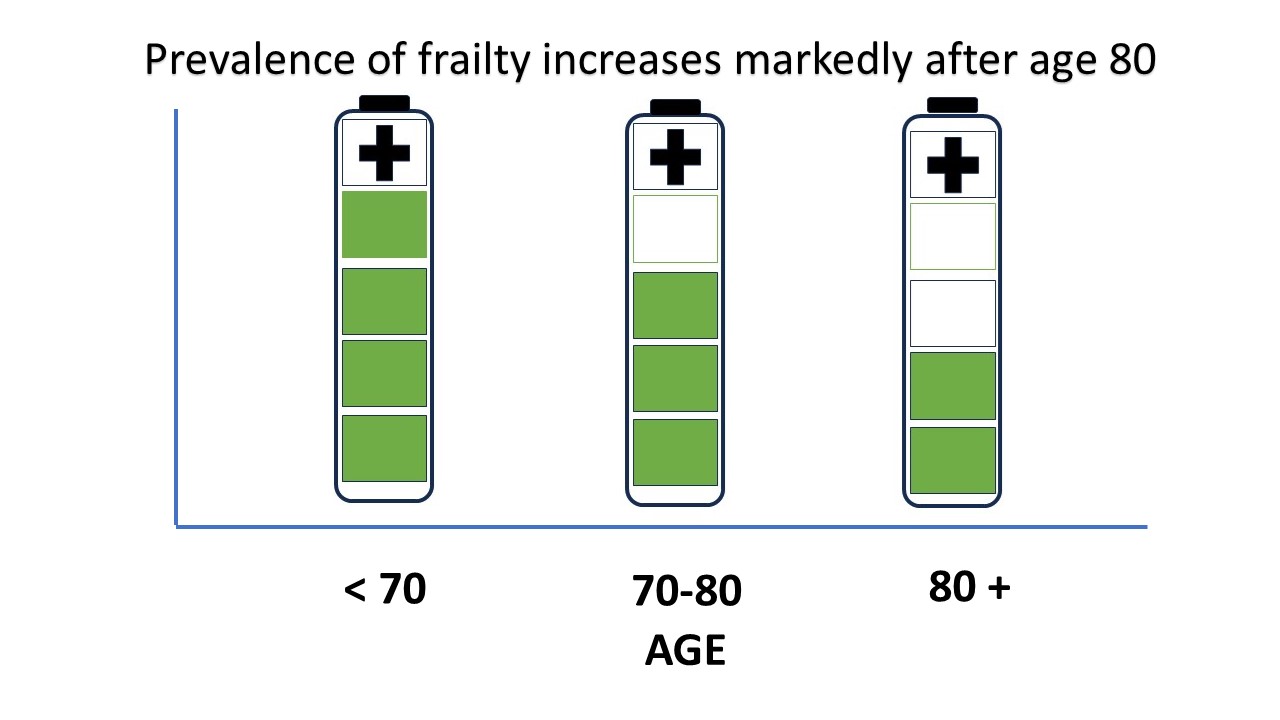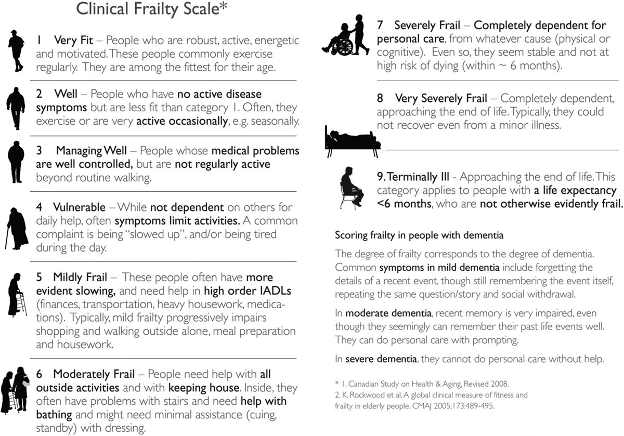“I recently went to my 50th reunion. A bunch of old people showed up. They looked like the grandparents of the people I knew in high school. It was freaky. The school athletes are now anything but athletes. They looked overweight and out of shape. Some even had problems walking.”
Have you ever been to a high school reunion? Everyone is roughly the same age, but some people seem to “age” sooner and more rapidly than others. As the years go by, some of these classmates will become frail while others will not.
Will we all get frail as we age?
People have mixed feelings about getting older. A big reason is the fear of frailty. This commonly occurs when people reach their 80’s. Frailty is seldom present among people in their 40’s and 50’s. At that point in life problems such as cancer occur more often. Chronic disease, such as congestive heart failure, is common as people become seniors. However, frailty is a major challenge in the 80’s. The ability to drive a car is a simple illustration of this. Many people are still driving at age 80. But few are driving by the age of 90. Similarly, as people age into their 90’s fewer and fewer people travel.

Image credit: Geriatrics with Aloha
Frailty is present in 5% of seniors who are younger than 70. Between the ages of 70 and 80, frailty increases from 10% to 20%. In the decade from 80 to 90, frailty increases from 20% to more than 50%. By the age of 90, the majority of seniors are frail.
What is frailty?
Humans are at “peak physical performance” in youth and into middle age. Strength, agility, and endurance begin to decline after that. But some people “age” sooner and more rapidly than others. As decades pass a threshold is passed and older adults become “frail”. A person is physically “frail” when three of the below criteria are met:
- Unintentional weight loss (10 pounds or more in one year)
- Physical exhaustion (self-reported)
- Muscle weakness (measured by grip strength)
- Slow walking speed
- Low physical activity
Why is frailty important?
The onset of frailty is a significant turning point for older adults. It results in major life changes and foreshadows mortality. Frail patients often experience a sense of low energy and fatigue. This leads to decreased ability to function independently. The clinical frailty score, shown below, makes this point. A number above 4 indicates frailty.

Image credit: Geriatrics with Aloha
Frailty also increases vulnerability to illness and a decreased ability to recover. Severe illness is more likely and hospital stays are longer. Complete recovery is less common, and mortality higher. The COVID-19 pandemic was evidence of this. Frailty was a strong predictor of poor prognosis. An 83-year-old patient who wasn’t frail was more likely to survive than a frail 72-year-old patient.
The last chapter of life can be long or short. Frailty is a common theme. Many seniors fear it. It can result in social isolation, a change in living situation, and financial stress. Perhaps most crucial is the potential loss of dignity, self-determination, and autonomy.
Lastly, frailty has major societal importance. Micheel Cottle wrote that we are “becoming a nation of caregivers”. Caregivers know this in their daily lives. Frailty has profound implications for the economy, the workforce, and society.







